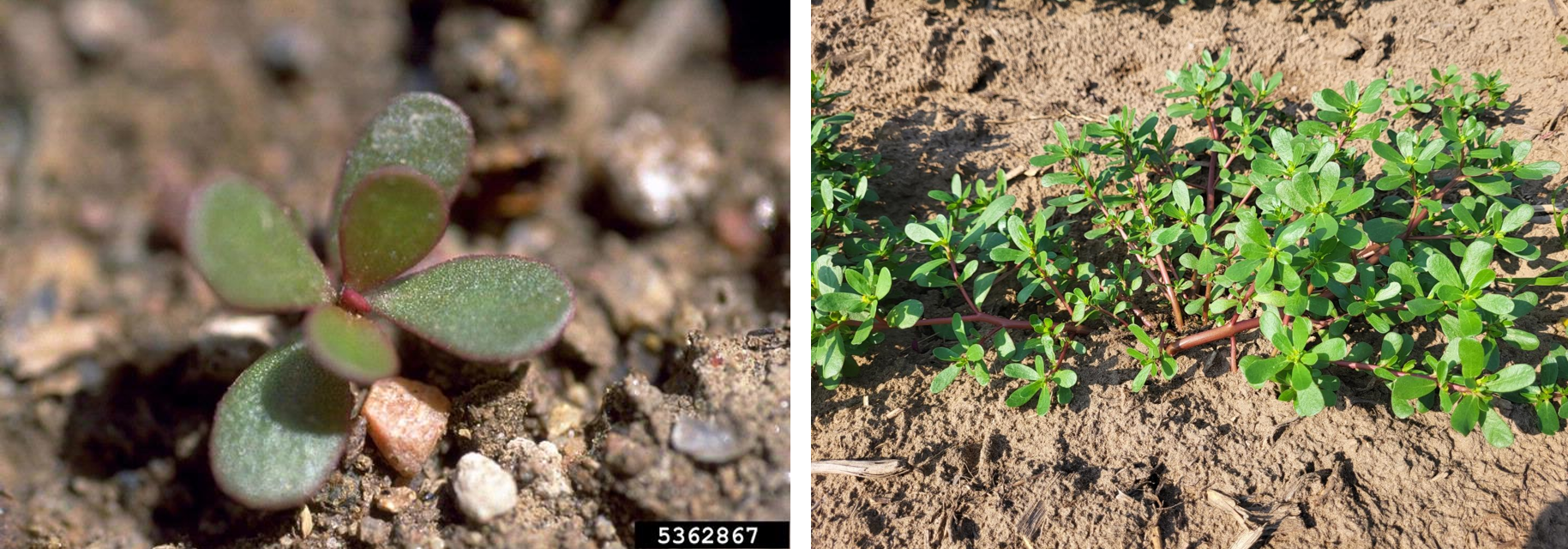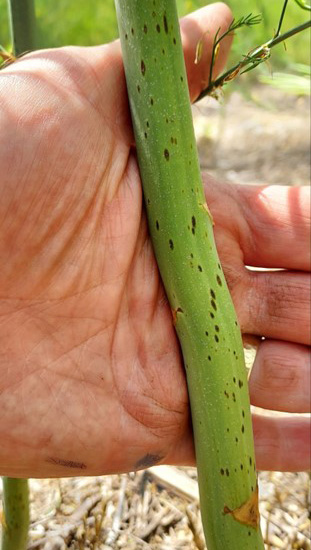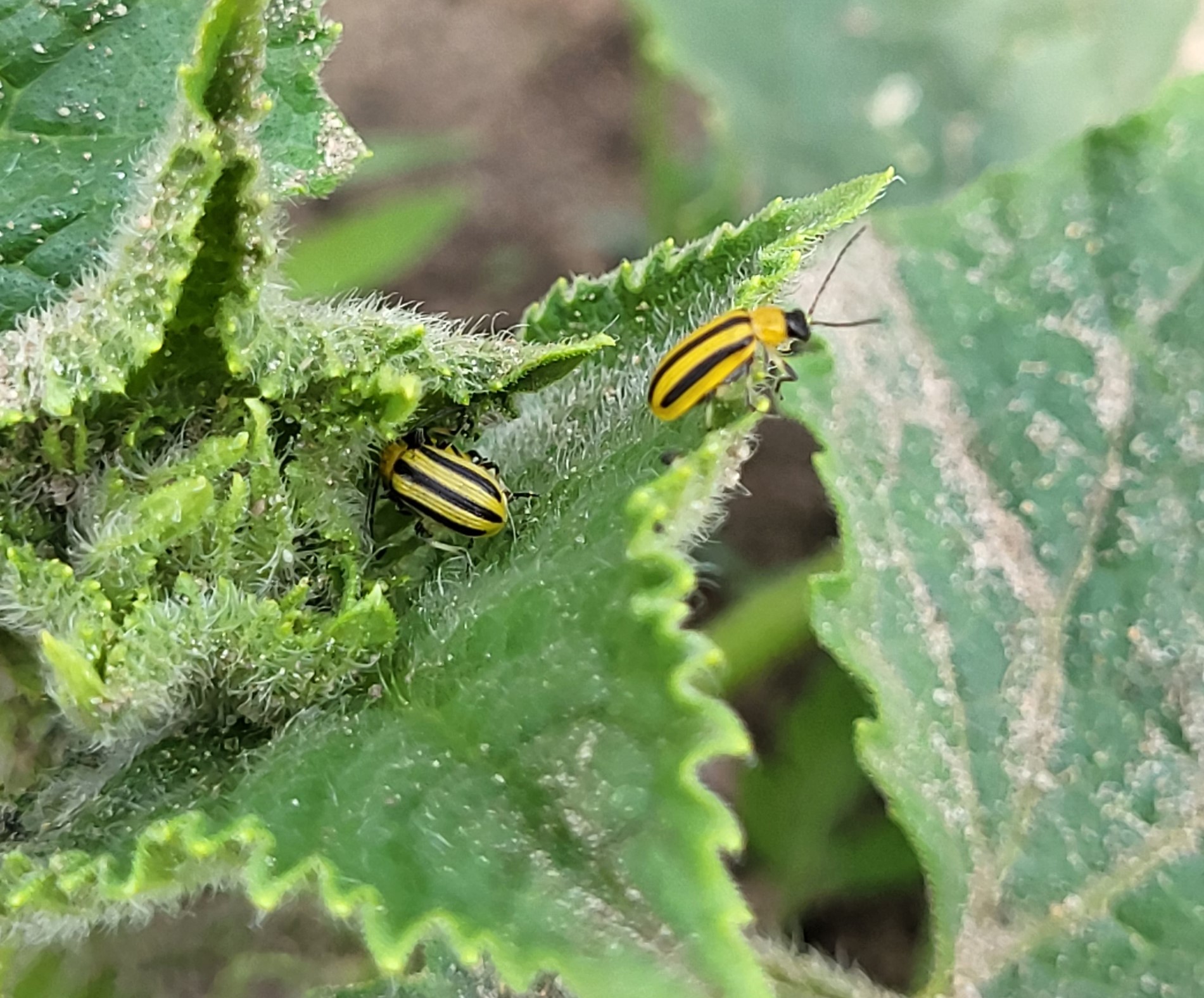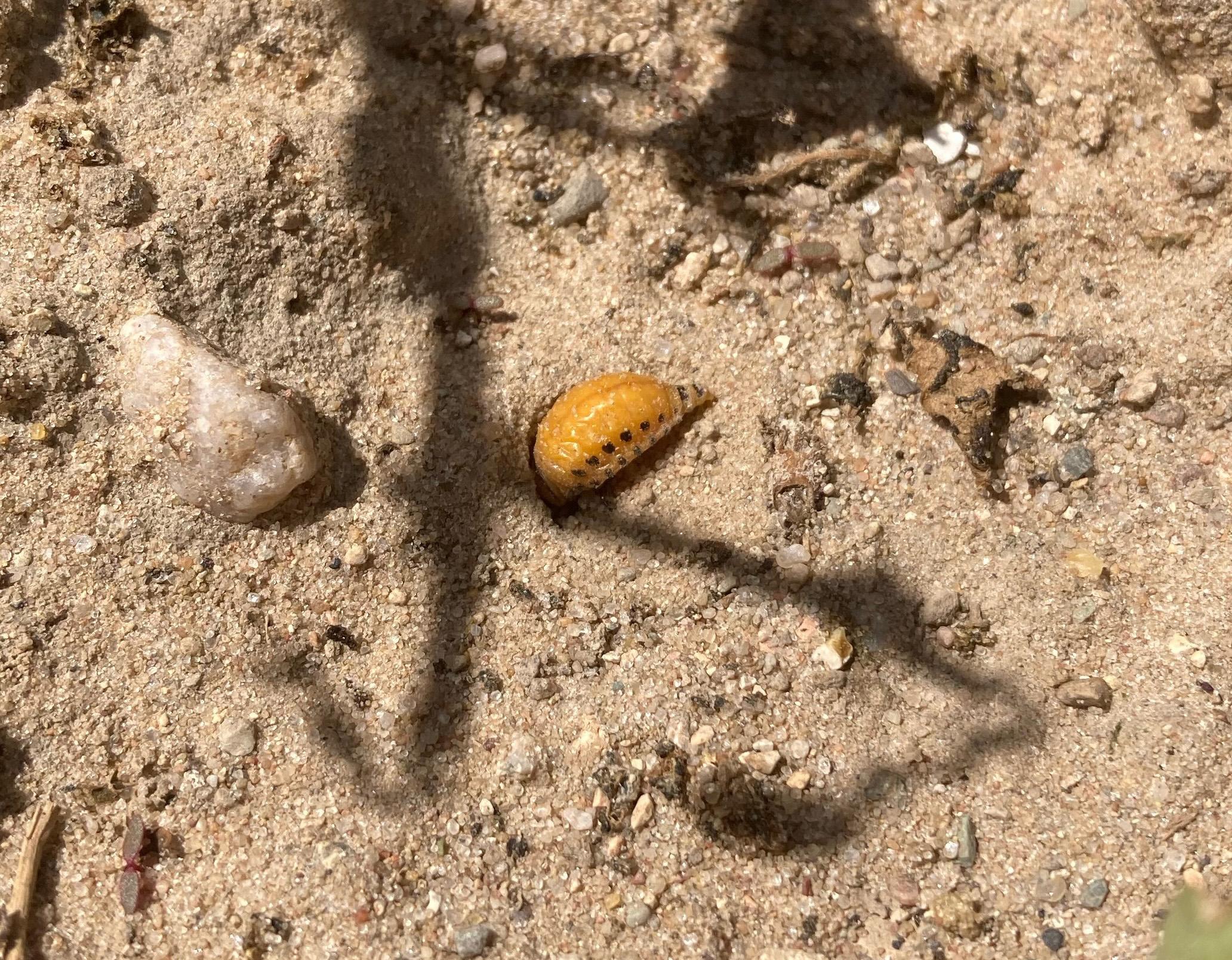Michigan vegetable crop report – July 5, 2023
Disease conditions are more prevalent now.
Weather
Watch Jeff Andresen’s weather update.
The past week saw most areas picking up 0.5 to over 1 inch of rain, the best rainfall in around two months. However, for the past 60 days we are still in a deficit, with 25-50% of normal rainfall.
The forecast calls for:
- Precipitation for the coming week is expected to be near normal and reach the northwest Lower Peninsula, which had been missed by previous rain.
- Scattered showers and thunder showers north Tuesday, mostly fair, hot and humid to the south. Showers and thunderstorms spreading west to east across state this evening and overnight.
- Showers and thunderstorms redeveloping east Thursday, gradual clearing and cooler to the west.
- Fair, dry and cooler Friday through Sunday. Scattered showers possible again early next week.
- High temperatures from the mid-80s to low 90s Wednesday cooling to the 70s to near 80 Friday continuing into the weekend. Low temperatures in the 50s north to near 70 south Thursday morning, cooling into the 50s this weekend.
- Medium range outlooks generally call for cooler and wetter than normal weather through the middle of July.
Weed of the week
Common purslane (Portulaca oleracea) is a summer annual broadleaf weed found across Michigan. Purslane is identified by its succulent leaves, red stems and prostrate growth habit. This weed can produce over 200,000 seeds per plant, with seeds remaining viable in the soil for decades. Purslane leaves are edible and can occasionally be found for sale at farmers markets. This weed is highly drought-tolerant—purslane can switch from C4 photosynthesis to the rarer CAM (crassulacean acid metabolism) photosynthetic pathway where stomata open at night to collect CO2 instead of during the day, thereby reducing water vapor loss.
Several herbicides have high efficacy for both pre- and post-emergent control of purslane, including Goaltender (oxyfluorfen), Chateau (flumioxazin) and Tricor (metribuzin). Consult the 2023 Weed Control Guide for Vegetable Crops for a full list of herbicide options and their effectiveness. Purslane tends to be more resistant to flame weeding than most broadleaves, but mulching and cultivation at the seedling stage are generally effective.

2023 MSU Extension Southeast Michigan Farmer Survey
MSU Extension is pleased to announce our 2023 Southeast Michigan Farmer Needs Assessment Survey. This survey will gather information about your farm and your potential interest in learning more about various farm-related topics. The information gathered will inform future programs and educational opportunities offered by MSU Extension educators for agricultural producers in southeast Michigan. This survey will take approximately 10 minutes to complete and is accessible at the link below:
Take the 2023 MSU Extension Southeast Michigan Farmer Needs Assessment Survey!
Feel free to share the survey link with other growers. We welcome any participation in the survey in order to help Michigan State University Extension better serve its communities.
Crop updates
Asparagus
Purple spot lesions were visible on asparagus stems this week. The pathogen overwinters on dead fern as pseudothecia. In spring/early summer, the pseudothecia swell up when it rains, squirting out ascospores onto spears and/or fern. Ascospores germinate and grow to produce lesions, like the ones you can see now. Conidia are produced within these lesions, which infect new tissue when the plant surface is wet and temperatures are warm. There are multiple, repeated cycles of conidia production and infection. This is the stage that leads to early defoliation of fern. It’s what growers model and manage with the TomCast disease forecaster and fungicides. Read all about purple spot’s life cycle and control here. Read more about control in the June 14 report.

Carrots and celery
For celery, scouts detected aphid colonies over the last week in at least one location. Variegated cutworm was also caught in appreciable numbers in some locations.
For carrots and celery, to date leafhoppers have been present in typical numbers (in other words, it hasn’t been an explosive leafhopper year to date). They are present but infectivity has been low.
For carrots, remember it can be important to use highly effective fungicides-such as Merivon or the Luna materials-early in a foliar disease program.
Escaped pigweed and marestail are challenging in carrots, and herbicides may not work well. Electrical weeding is one way to control these weeds once they are taller than the canopy. On the marestail front, one farm zapped the tall plants and then followed up with cultivation for the small ones.
Cole crops and leafy greens
A steady supply of heading and cut-leaf greens are going to market. Overhead irrigation and a cold-chain improve leaf firmness in hot weather. Certain varieties of broccoli and cauliflower are still showing heat stress.
Cucurbits/pickles
Hard squash and pumpkin planting will be wrapping up soon. Typically, it is difficult to expect ripe pumpkins by Halloween beyond July 4 if seeded, or July 10 if transplanted, but it all depends on the variety and summer weather. Summer squash and cucumbers are being harvested. Some pollination issues were observed in zucchini and summer squash in southwest Michigan last week, possibly owing to a couple nights in the low 50s on June 27 and June 28, coinciding with daytime highs in the mid- to high 80s, and the foggy mornings and smokey days over the same period of time. This particular combination of conditions is not commonly observed and may have interfered with both plant and honey bee biology such that pollination was lacking or nonexistent.
Stay on the lookout for cucurbit downy mildew. Consider starting protectant fungicides on cucumbers, pickles and melons. It was detected on cucumbers in Kent County, Ontario, on July 4, 2023.
MSU is looking for anthracnose leaf and fruit rot and Phytophthora samples for research. Please reach out to us if you’ve got any potential infestations.
Striped cucumber beetle pressure has been extreme in some cucurbit plantings. Check out this article on integrated cultural practices for control of striped cucumber beetles.

Fruiting vegetables
Field tomatoes are on their third trellis string and both tomatoes and peppers are setting their subsequent fruit following the crown set. The crown fruit (the first set of fruit) are increasing in size in field tomatoes, and hoophouse tomatoes are being picked across the region even in late-planted houses.
Warm overnight temperatures and high dewpoints mean weather has been favorable for development of tomato foliar diseases.
One question came in this week about a dull red color while picking instead of being shiny. This typically indicates the tomato is not fully ripe, despite being fully colored. When cut, these tomatoes had green flesh and seeds inside, providing more evidence for an underripe state. It can be easy to pick green peppers before they are ready as well. Green bells, like cucumbers and summer squash, are picked as immature fruit with underdeveloped seeds and are usually green. A green ripe pepper is described as hard by growers, which indicates that the outer skin of the fruit is solidifying to a point where it won’t respire too much moisture after picking. An under ripe green pepper will quickly start to shrivel after picking.
MSU is looking for anthracnose fruit rot and phytophthora samples for research. Please reach out to us if you’ve got any potential infestations.
Onions
Already applied a FRAC 7 fungicide for Stemphylium? A Bravo (FRAC M5) and Tilt (FRAC 3) combination can be a good rotational partner that includes different modes of action. Omega (FRAC 29) and its generic provide yet another mode of action. On the FRAC 7 front, note that Miravis Prime has proven effective in Mary Hausbeck’s trials (FRAC 7/12). Read Hausbeck’s trial-based info on Stemphylium spray programs.
Onion thrips control has been underway. Some farms have made their two Movento applications. Some have followed this with Radiant in places where thrips were very abundant. If you end up in this boat at some point this year (two Movento followed by two Radiant applications), Minecto Pro or Exirel could be considered in the two spray slots after Radiant, depending on thrips pressure and days to harvest. Movento can be followed by other products besides Radiant when thrips pressure is lower. Also, research at Cornell University has shown that Exirel could be used in situations where Radiant no longer seems as effective as it once was. See the latest onion thrips recommendations from Cornell University in article format, or a graphical “choose your own adventure” spray format is here.
Potatoes
Volunteer potatoes that were infected last year with late blight can overwinter to become a source of inoculum this year. This means controlling volunteer potatoes is an important part of managing this disease. Read more about control of volunteer potatoes. Overall volunteer potato survival was high this year.
Colorado potato beetles are currently pupating in many areas of Michigan, indicating that in one to two weeks we will see summer adults emerging. The emergence of the summer generation of adults marks the time when insecticide programs should switch classes of active ingredients. The table below lists insecticides recommended for the summer generation for control, especially if neonicotinoids were used earlier in the season. For resistance management purposes using the same active ingredient (IRAC) is recommended for the entire summer generation.
Scouting for Colorado potato beetles is an important part of correctly timing foliar insecticide applications and thus preventing insecticide resistance from becoming a major problem. Scouts visually survey multiple whole plants per field to count egg masses, small and large larvae and adults. They record these numbers to determine if an economic threshold has been reached. The typical threshold used is one large larva per plant or one adult per plant.
|
Insecticide options for summer Colorado potato beetle management |
|||
|---|---|---|---|
|
Delivery |
Product |
Active Ingredient |
IRAC |
|
Foliar |
Agri-Mek, generics |
abamectin |
6 |
|
Foliar |
Coragen, Voliam Xpress1 |
chlorantraniliprole |
28 |
|
Foliar |
Exirel |
cyantraniliprole |
28 |
|
Foliar |
Admire Pro, generics |
imidacloprid |
4A |
|
Foliar |
Avaunt2 |
indoxacarb |
22A |
|
Foliar |
Torac |
tolfenpyrad |
21A |
|
Foliar |
Radiant |
spinetoram |
5 |
|
Foliar |
Blackhawk, Entrust |
spinosad |
5 |
|
Foliar |
Actara, Endigo ZC1 |
thiamethoxam |
4A |
|
1 Premixed with pyrethroid, apply when potato leafhoppers are also problematic. 2 Avaunt has limited activity on larvae. |
|||

Root crops
Beets and radishes are being harvested regularly now.
For brassica root crops, degree days suggest the first summer flight of cabbage maggot flies is happening at some locations. Read more about control.
Sweet corn
Succession plantings continue. First plantings of sweet corn are expected to be harvested by next week. Worried about sweet corn worms? Sweet corn growers are encouraged to set up traps to monitor for corn earworms. The trap should be set up before the first crop of sweet corn begins to tassel and placed outside the field with lures changed regularly. The attractiveness of sweet corn is dependent on the stage of development of field corn in the surrounding areas. Early in the season, before the neighboring field corn begins to silk, insecticides should be applied to sweet corn when fresh silks are present and one moth per night is being caught in the pheromone trap. In the middle of the season when field corn is producing fresh silks, insecticides should be applied when 10 moths per night are being captured in the pheromone trap. After pollination is complete in field corn, the spray threshold should be reduced to one moth per night because dent corn is again unattractive to the moths. Many sweet corn growers are on regular spray schedules as any damage is unacceptable, but traps are still useful, as they can help guide spray intervals (more moths equals tighter intervals). Check out these short video tutorials for corn earworm monitoring. Read more about corn earworm biology and management.
Corn earworms can be managed with pyrethroid, diamide or spinosyn insecticides. Pyrethroids include Ambush/Pounce, Asana, Baythroid, Capture/Brigade, Mustang Maxx and Warrior. Diamides include chlorantraniliprole, which is in Besiege, Coragen and Vantacor. Spinosyns include spinetoram or Radiant. In some places, pyrethroids have produced unsatisfactory results because of the development of resistance.
Strawberries
For many growers, it is time to renovate strawberries.
On-farm food safety
MSU and the conservation districts offer a program to visit your farm to go over your food safety program to provide critiques and comfort in a confidential fashion. You can then use these notes to make changes ahead of an actual inspection from the Michigan Department of Agriculture and Rural Development. If you are interested in an On-Farm Readiness Review (OFRR), please fill out this OFRR request survey to start the scheduling process—the sooner the better.
Fruit and vegetable growers may (still) be eligible for pandemic funds until July 14!
Fruit and vegetable growers may still be able to get funds using the Pandemic Assistance Revenue Program (PARP) and Emergency Relief Program (ERP); the application deadline has been extended until July 14, 2023. Farmers who had a 15% or more drop in revenue in 2020 can get most of that difference back under PARP, unless they already got that amount from other pandemic programs.
PARP is a good program for farmers who did not get caught up from other COVID-19 programs, often specialty crops growers. However, it is a complicated program to navigate. Please contact Chris Bardenhagen at 231-866-1959 or bardenh1@msu.edu or another member of the MSU Extension farm business management team to help you determine whether it makes sense to apply. Or contact your local Farm Service Agency (FSA) office directly. Please see our article on these programs and the United States Department of Agriculture’s PARP and ERP webpages.
Example: Under the PARP program, payments are based on whole farm revenue by calendar year. As an example, if a producer had $300,000 in allowable gross revenue in 2018, $275,000 in 2019, and 250,000 in 2020, the producer would qualify for PARP funds because 2020 revenue is more than 15% less than the 2018 revenue. The difference—$50,000—would be multiplied by the payment factor (let’s use 80% for this example, though some growers qualify for 90%). The resulting FSA payment of $40,000 would be reduced by payments received under certain pandemic assistance programs, if any. For example, a producer receiving $25,000 in CFAP 2 funds would still be eligible for a $15,000 payment.
Events
- July 6, 7–8 a.m., Field Crops Virtual Breakfast: Strategies For Efficient Irrigation Water Use
- July 12, 10:00 am - 2 pm, Ontario AgRobotics Field Tour, Part 2
- July 13, 7–8 a.m., Field Crops Virtual Breakfast: Cover Crops After Wheat
- July 14, 12–1 p.m. CT: Farm Bill Friday Focused on Climate & Conservation
- July 17, 8:30 a.m. - 12 p.m., Biochar in Michigan Agriculture
- July 20, 7–8 a.m., Field Crops Virtual Breakfast: Tar Spot
- July 20, 9 a.m. - 1:30 p.m., In-Field and Edge-of-Field Conservation Practice Field Day
- July 27, 7–8 a.m., Field Crops Virtual Breakfast: Bugs And More Bugs!
- August 3, 7–8 a.m., Field Crops Virtual Breakfast: Farm & Truck Vehicle Regulations And Safety
- August 3, 8 a.m. - 4 p.m., 2023 Montcalm County Field Day
- August 10, 7–8 a.m., Field Crops Virtual Breakfast: How To Get The Best Out Of Your Drainage System
- August 17, 7–8 a.m., Field Crops Virtual Breakfast: "Hot Topic" Q & A Session
- August 24, 7–8 a.m., Field Crops Virtual Breakfast: Timing The Last Irrigation Application
- August 31, 7–8 a.m., Field Crops Virtual Breakfast: Setting The Stage For Record Breaking Wheat Yields
- September 7, 7–8 a.m., Field Crops Virtual Breakfast: Marketing Your Grain Crops
- September 14, 7–8 a.m., Field Crops Virtual Breakfast: Monitoring Nematode Resistance In Soybeans
- September 19-21, Farm Science Review
- September 21, 7–8 a.m., Field Crops Virtual Breakfast: Fall Weed Control
- September 27, Wooster, OH, Midwest Mechanical Weed Control Field Day
This work is supported by the Crop Protection and Pest Management Program [grant no 2021-70006-35450] from the USDA National Institute of Food and Agriculture. Any opinions, findings, conclusions, or recommendations expressed in this publication are those of the author(s) and do not necessarily reflect the view of the U.S. Department of Agriculture.



 Print
Print Email
Email

